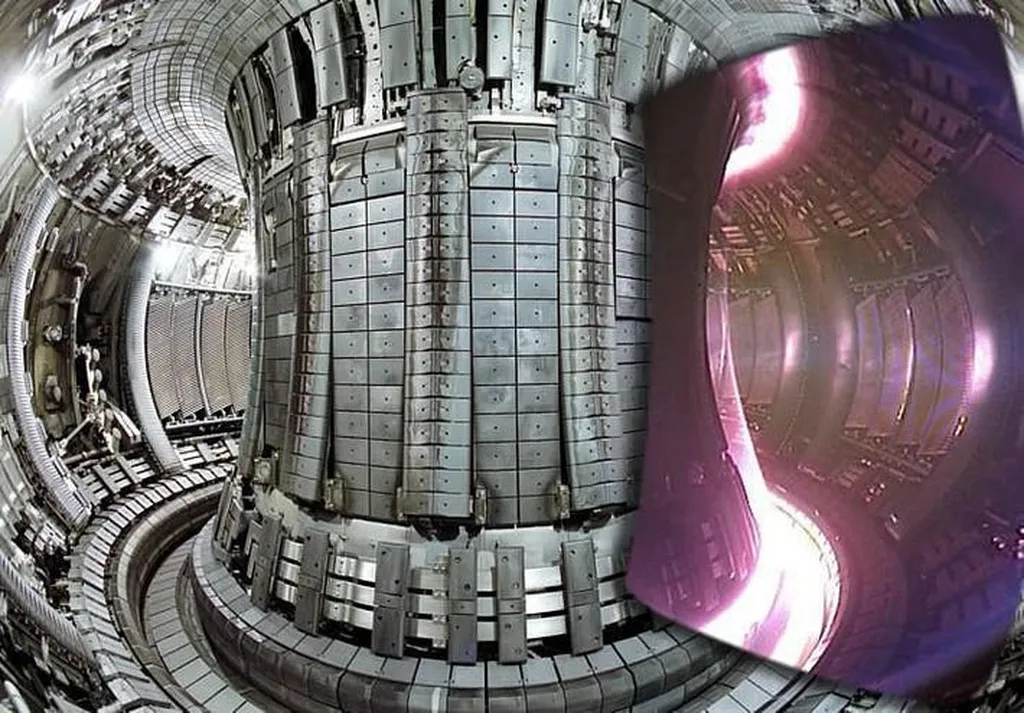In the quest for sustainable and efficient fusion energy, scientists have long sought to understand and control the behavior of plasma within tokamaks, the doughnut-shaped devices designed to harness the power of the sun. A recent study published in the journal ‘Nuclear Fusion’ has identified a crucial window for achieving a desirable plasma state known as quiescent H-mode (QH-mode), which could significantly enhance the stability and efficiency of future fusion reactors.
The research, led by Dr. N. Aiba from the National Institutes for Quantum Science and Technology in Japan, focuses on the magnetohydrodynamic (MHD) stability of plasmas in the DIII-D tokamak. By incorporating the effects of plasma rotation and ion diamagnetic drift into their linear MHD stability analysis, Aiba and his team have pinpointed a specific region in the stability diagram where QH-mode can be sustained.
“This window lies between the stability boundaries of the kink/peeling mode, identified with and without the inclusion of plasma rotation effects,” Aiba explained. “In this region, the mode remains unstable unless rotation effects are considered alongside the ion diamagnetic drift, which is consistently included in our analysis.”
The stabilization of the MHD mode, facilitated by the coupled effects of plasma rotation and ion diamagnetic drift, is pivotal for widening the window and achieving the QH-mode state. This finding is particularly significant for the energy sector, as QH-mode operation can suppress edge localized modes (ELMs), which are sudden releases of energy that can damage the tokamak’s walls and reduce the efficiency of the fusion process.
By controlling the pedestal structure—the region of steep pressure gradient at the edge of the plasma—scientists can ensure that the plasma state remains within the operation window, thereby suppressing ELMs and enhancing the overall stability of the plasma. This control is essential for the commercial viability of fusion energy, as it directly impacts the lifespan and maintenance requirements of future fusion reactors.
The study also highlights the importance of optimizing the pressure pedestal and its associated bootstrap current density near the last closed flux surface. While a higher current density can be advantageous for situating the plasma state within the window, excessive current density can trigger ELMs. This delicate balance is crucial for achieving sustained QH-mode operation.
The research not only provides a deeper understanding of the underlying physics but also offers practical insights for the design and operation of future fusion reactors. By identifying the specific conditions required for QH-mode operation, scientists can work towards developing more stable and efficient fusion devices, bringing us one step closer to a sustainable energy future.
As Dr. Aiba noted, “The location of the operation window in the stability diagram depends on the kink/peeling mode stability properties. Therefore, optimizing conditions for QH-mode requires adjustments based on changes in stability characteristics.”
This work, published in the journal ‘Nuclear Fusion’ (formerly known as ‘Nuclear Fusion’), represents a significant advancement in the field of fusion energy research. As the global demand for clean and sustainable energy sources continues to grow, the insights gained from this study could play a pivotal role in shaping the future of the energy sector. By providing a clearer path to achieving stable and efficient fusion reactions, this research brings us closer to a future where fusion energy could power our homes, industries, and beyond.

